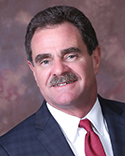
Beginning around 1950, automobile manufacturing was revolutionized by a simple pull cord—in Japanese, the andon. As part of the Toyota Way manufacturing process, any worker could pull the andon and stop the entire assembly line if he spotted a problem or defect. Japanese companies understood that reacting quickly to problems paid off.
A new kind of andon has been pulled, and it’s going to revolutionize the industry—again. It’s named Google. And Uber. And now BMW and Cadillac. The rise of ride-sharing services and autonomous vehicles is going to fundamentally change every aspect of the automobile business. Another metaphorical cord has been pulled—so what happens now?
The rapid rise of ride-sharing and autonomous vehicles is transforming the car from something consumers proudly own to something they use to get from point A to point B. This is a gigantic cultural shift, powered by the internet and the changing tastes of the millennial generation. Buying, maintaining, parking and driving a car has been replaced by calling an Uber. Or, soon, a car that drives itself while you do other things.
For dealerships, which are the engine (pun intended) of the automobile business, this is a tectonic shift. Some think it’s a fad, or an insignificant trend, and are betting on business as usual. Many industry experts believe these dealers should seriously consider selling their operations as quickly as possible: values will only decline.
More forward-looking dealers understand that these new offerings will fundamentally change how they do business. Rather than selling a product, dealerships are going to become a kind of transportation brokerage, providing customers with custom transportation solutions that meet their tastes and needs without the commitment of actual ownership. For example, for a flat monthly fee, you can borrow and use three different vehicles during the month—an SUV for weekends, say, a sports car for the drive to Chicago and something else for running around town. The Book by Cadillac program is an example of this, as is BMW’s RideOn plan.
Some dealers operate these programs independently, providing vehicles from a variety of brands, and include Uber and Lyft services in the mix. Waiting in the wings, of course, are programs like Google’s Waymo self-driving car project, which will deliver another massive change.
For dealers who plan to pursue the current business model, and/or sell their operations, the challenges are the same as they’ve always been: taxation, succession planning and transactional law. For dealers shifting to the new model of monetizing their customer relationships through ride-sharing and other programs, the work is more strategic. The dealer develops a business plan, shops it to investors, and the advisers help execute, including protecting IP, managing risk and handling new forms of potential liability.
No matter what, though, the andon has been pulled. The car business line isn’t moving. And when it restarts, something very different is going to start rolling off the other end.
Robert A. Zinn, P.A. is a seasoned transactional attorney with in-depth knowledge of all operational areas of the automotive industry. For many years, he owned and operated a Mazda dealership in South Florida.







